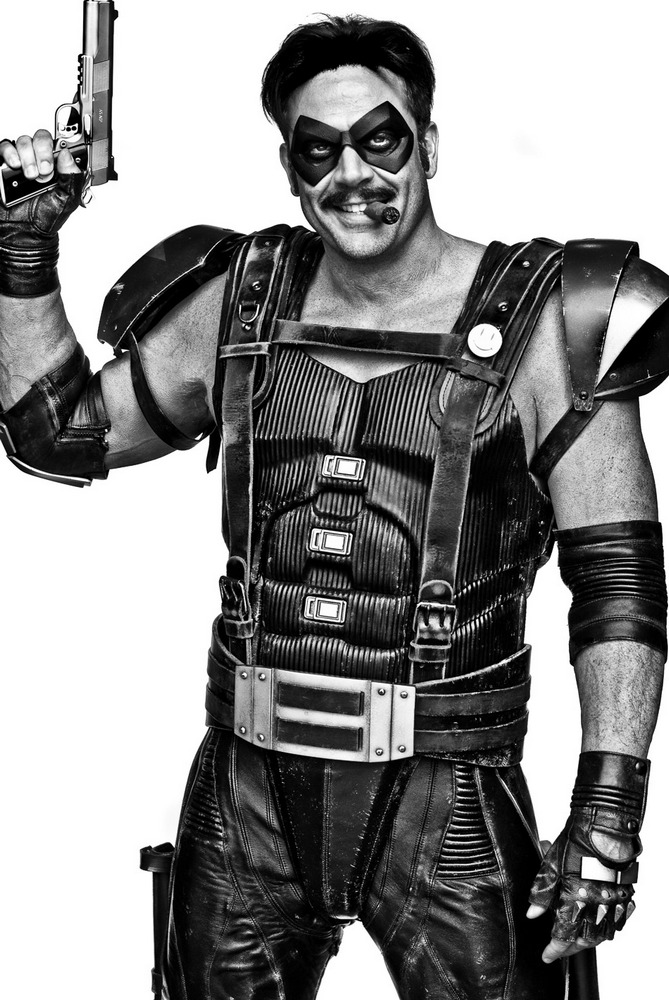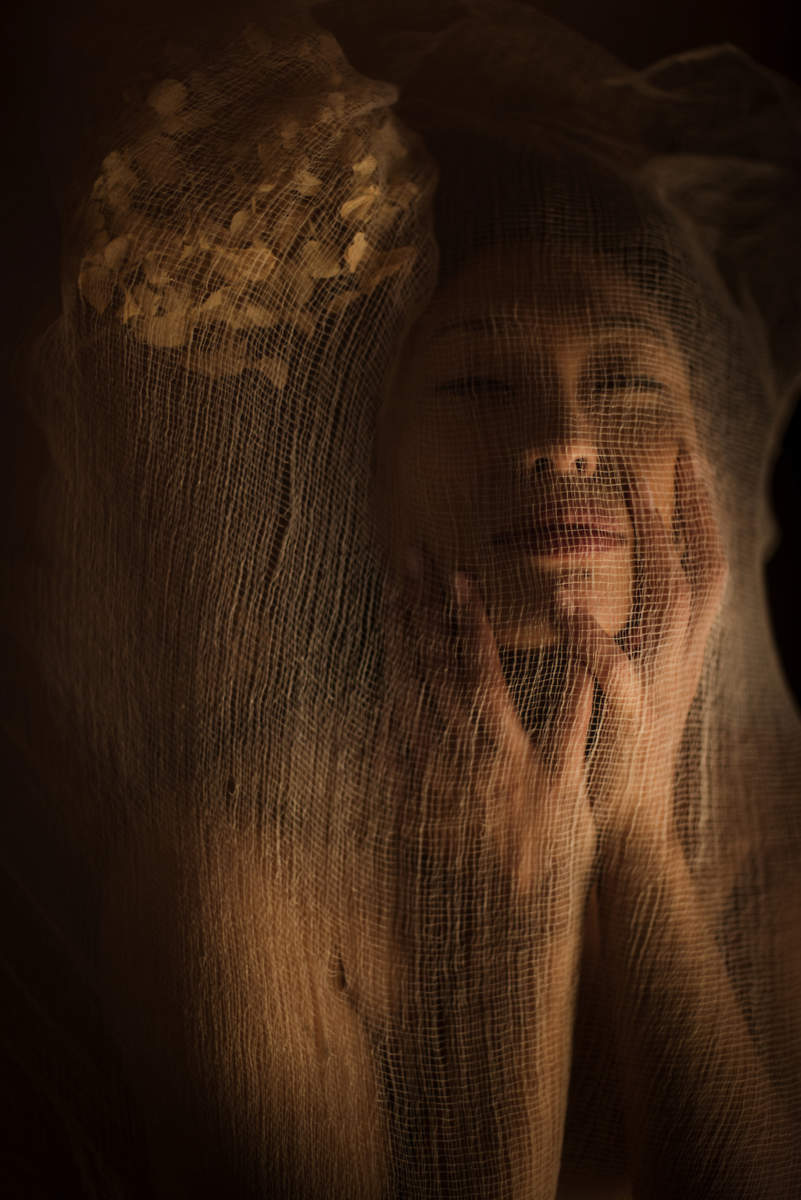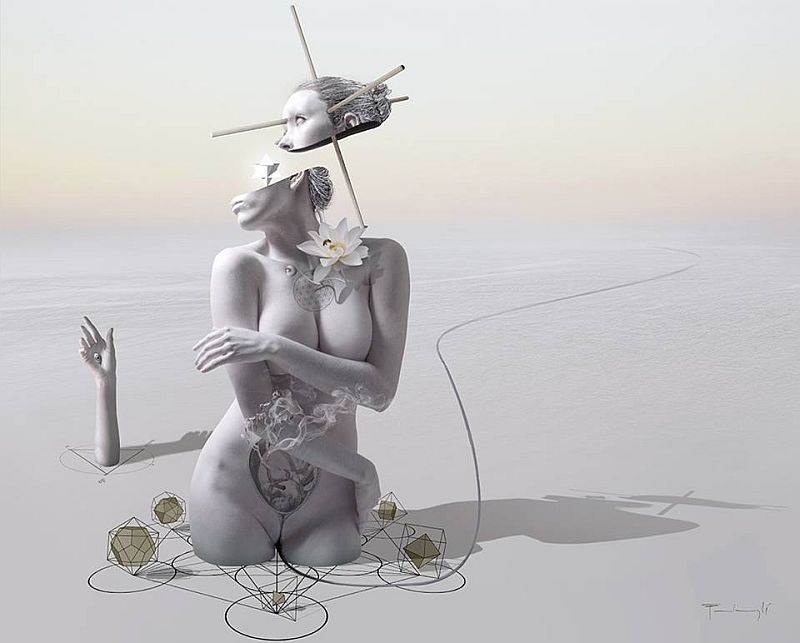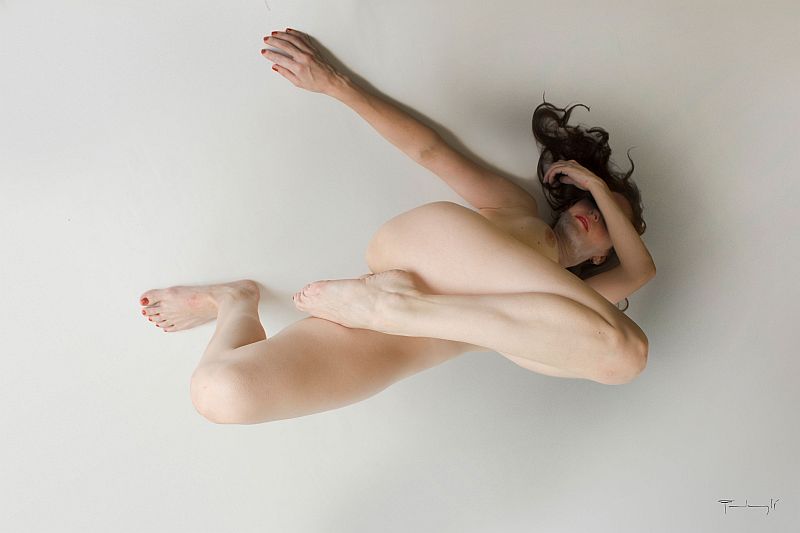Albert Ramos
Albert junto a su obra "La espera" / with his work "The Wait"
Albert Ramos Cortés nació en Barcelona y se crió en un pueblo cercano, Argentona.
En 1998 comenzó su carrera de ilustración y diseño gráfico, hasta que se mudó a San Francisco, California, para estudiar ilustración y trabajar para mejorar sus habilidades en la Academy of Art University en 2004. Mientras estudiaba su Licenciatura, trabajó para varios clientes en España, y su curiosidad por las bellas artes se hacía cada día más fuerte. En 2009 se graduó cum laude, y decidió inscribirse en la Maestría de Bellas Artes en su alma mater, donde obtuvo su Master en Dibujo y Pintura en 2012.
Albert ha ganado muchos premios, su obra ha sido publicada en revistas y libros, y se ha presentado en varias muestras colectivas, en galerías tales como Waterhouse Gallery en Santa Barbara, California; Modern Eden en San Francisco, California, y Galeria Artelibre en Zaragoza, España.
La obra de Alberto ofrece una representación realista de sus recuerdos, gente, lugares e ilustraciones del hogar que dejó atrás; intenta pintarlas antes de que se pierdan en el tiempo.
"La espera / The Wait", óleo / oil, 28 x 22
«Estoy permanentemente buscando mi propia voz, para ser tan honesto como pueda con mis obras de arte, y eso implica una evolución eterna en estilo y temática. Podría describir mi arte como realismo contemporáneo. Ambas palabras, contemporáneo y realismo, pueden ser muy subjetivas y aún seguir siendo fieles a sus significados.»
"Ausencia-Presencia-Ausencia / Absence-Presence-Absence"
Óleo sobre lino, sobre panel / oil on linen on board, 100,4 x 155,3 cm., 2012
«Ella es mi abuela. Generalmente para mí el recuerdo que tengo de mi abuela, es ella reunida con mi abuelo y mi bisabuela; ambos han fallecido estando yo aquí, así que no pude decirles adiós.
Para mí, en mi cabeza, cuando regreso a casa espero eoncontralos otra vez en la cocina. Ya no están allí, pero cuando he decidido pintar esta situación... hay un sitio vacío aquí donde mi bisabuela solía sentarse... y el vino representa a mi abuelo.
La situación familiar de ellos reunidos en la cocina, se ha trasladado ahora a una ausencia, una presencia y una ausencia, así que es un retrato triple. Dos personas se han ido, y una está aquí.»
«She's my grandmother. Usually for me the memory I have of my grandmother... she hanging out with my grandfather and great-grandmother who both passed when I was here so I couldn't say goodbye.
To me, in my head, when I go back home I expect to meet them in the kitchen again. They're no there but when I decided to paint this situation... there's an empty spot here where my great-grandmother used to sat... and the wine represents my grandfather.
The familiar situation of them hanging out on the kitchen, is now translated to an absence, a presence and an absence, so is a triple portrait. Two people are gone and one person is here.»
Izq./ Left: "Noir", grafito sobre papel / graphite on paper, 11" x 7", 2013
Der./ Right: "Michael", grafito sobre papel / graphite on paper, 24" x 18", 2012
"El Hombre Que Amé (Retrato de Mi Abuelo) / The Man I Loved (Portrait of my Grandfather)"
Óleo sobre lino, sobre panel / oil on linen on board, 75,8 x 61 cm., 2012.
Colección del artista / Collection of the Artist
«Esta es la fase final de una trilogía que incluye una fotografía en blanco y negro y un dibujo al carboncillo, ambos utilizando la misma imagen. En la representación al óleo, el tamaño del sujeto (mi abuelo) es mayor del natural, indicando que fue, y aún es, una gran presencia en mi vida. Sus manos están agrandadas, para transmitir que fue un hombre que trabajó muy duro. Se muestra de frente porque era honesto y directo. Y, finalmente, la pintura es en color, a diferencia de las versiones anteriores de la imagen, porque, aún cuando ya ha fallecido, su influencia sigue viva.»
«This is the final stage of a trilogy that includes a black-and-white photograph and a charcoal drawing, both using the same image. In the oil rendering, the size of the subject—my grandfather—is larger than life, indicating that he was, and still is, a huge presence in my life. His hands are enlarged to convey that he was a hard worker. He is shown facing forward because he was honest and straightforward. And finally, this painting is in color, unlike previous versions of the image, because, even though he has passed away, his influence is still alive.»
"Hermes", óleo sobre panel / oil on board, 35" x 39,25", 2014
"Doppelgänger", óleo sobre Mylar / oil on Mylar, 24" x 24", 2010
Albert cree que uno debe devolver lo que ha recibido. Actualmente es instructor a tiempo parcial en la AAU, mientras engrosa su obra y pule sus habilidades a través de encargos que recibe desde sus vieja y nueva madres patrias; Europa y Estados Unidos.
"Nostalgia", grafito sobre papel / graphite on paper, 7" x 12". 2013
"El peso de la memoria"
«Cuando dejé España, dejé atrás a la gente que amaba, los lugares en los que crecí y las situaciones que me eran familiares, pero me traje conmigo mis recuerdos. Esos recuerdos son la base de mi obra actual; son el nexo entre lo que dejé atrás y lo que soy ahora, así que necesito pintarlo antes de que se pierda en el tiempo.
Cada recuerdo cuenta una historia diferente, por ende cada pintura es tratada de forma diferente. Diseño mis pinturas intrincadamente, lentamente para permitir que el tiempo organice y ordene mis recuerdos, haciendo de su representación una transcripción más realista de las imágenes en mi cabeza. Las texturas y pinceladas son visibles; el producto del barro y el aceite.»
"Al Fresco", grafito sobre papel / graphite on paper, 23,5" x 17,5", 2013
Albert Ramos Cortés was born in Barcelona and grew up in a nearby town, Argentona. In 1998 he began his illustration and graphic designer career until he moved to San Francisco, California, to study illustration and work on his skills at the Academy of Art University in 2004. While pursuing his B.F.A. he kept working for various clients back in Spain, as his curiosity for fine art grew stronger every day. In 2009 he graduated cum laude and decided to enroll in the Masters of Fine Art at his alma mater where he obtained his M.F.A. in Drawing and Painting in 2012. Albert has won many awards, his work has been published in magazines and books and he has had many group shows, in galleries such as Waterhouse Gallery in Santa Barbara, California, Modern Eden in San Francisco, California, and Galeria Artelibre in Zaragoza, Spain. Albert’s work depicts a realistic representation of his memories, people, places and situations he left back home, as he tries to paint them before they get lost in time.
"Persona (Autorretrato / Self-Portrait)", óleo sobre lienzo / oil on canvas, 12" x 12", 2014
"Font del Lladó"
Óleo sobre lino, sobre panel / oil on linen on board, 76,5 x 97,1 cm., 2012
"Marvin (Dibujo del natural / Life Drawing), grafito sobre papel / graphite on paper, 16" x 9", 2014
Izq./ Left: "Richard", carboncillo sobre papel / charcoal on paper, 16" x 12"
Der./ Right: "Estudio de muchacho con turbante / Study of a Boy With Turban"
Óleo sobre lienzo / oil on canvas, 16" x 12"
«I am constantly finding my own voice in order to be as honest as I can in my artwork, and that means an eternal evolution in style and subject matter. I would describe my art as contemporary realism. Both words, contemporary and realism, can be very subjective and still be true to their meanings.»
"Buscando la Iluminación / Looking for Illumination"
Óleo sobre lino, sobre panel / oil on linen on board, 86,34 x 139,7 cm., 2012-13
"Janus", grafito sobre cuaderno de bocetos Moleskine / graphite on Moleskine sketchbook, 8 1/4" x 10", 2015
"José Alberto Ramos Román (Retrato de mi padre / Portrait of my Father)
Óleo sobre lino, sobre panel / oil on linen on board, 36" x 36", 2011
The Weight of Memory
«When I left my home in Spain I left behind the people I love, the places where I grew up and the situations that were familiar to me but I brought my memories with me. These memories are the foundation of my current body of work, they are the link to what I left behind and to who I was, so I feel the need to paint them before they get lost in time.
Every memory tells a different story; hence every painting is treated differently. I intricately design my paintings slowly to allow time to organize and arrange my memories, making their representation a more realistic rendering than the images in my head. The textures and the strokes remain visible - the product of mud and oil.»
"Tarde de ocio / Lazy Afternoon", óleo sobre lino, sobre panel / oil on linen on board, 14" x 18"
"Reminiscencia / Reminiscence", grafito sobre papel / graphite on paper, 12" x 8", 2012
Albert believes that one has to give back what one has received, he is currently part-time instructor at the AAU, while he engrosses his body of work and polishes his skills through commissions that he receives from his old and new motherland, Europe and America.
Óleo sobre panel / oil on board, 18,5" x 13", 2012
"Grandes expectativas / Great Expectations", óleo sobre panel / oil on board, 24" x 36", 2013
Los textos están tomados del sitio web del artista, del video que puede verse más abajo, y de una entrevista publicada en Southwest Art, Nev., 2012 que puede leerse completa aquí.
Texts from artist's website, the video you can see below, and an interview published by Southwest Art, Nov., 2012 you can fully read here.
Los textos están tomados del sitio web del artista, del video que puede verse más abajo, y de una entrevista publicada en Southwest Art, Nev., 2012 que puede leerse completa aquí.
Texts from artist's website, the video you can see below, and an interview published by Southwest Art, Nov., 2012 you can fully read here.
Más imágenes e información sobre Albert en / More images and information about Albert in:
Website, Artelibre, facebook
Imágenes publicadas con autorización del artista (¡Muchas gracias, Albert!)
Images published here with artist's permission (Thanks a lot, Albert!)
Albert habla sobre su obra, en especial de su pintura "Ausencia-Presencia-Ausencia"
Muestra de primavera 2012 de la Universidad Academia de las Artes
Albert talks about his work, especially about his painting "Absence-Presence-Absence"
Academy of Art University's 2012 Spring Show




-OSLINO%2Bon%2BBoard-24%2Bx%2B30%2Binches.jpg)

























































































































































































































































































































































































